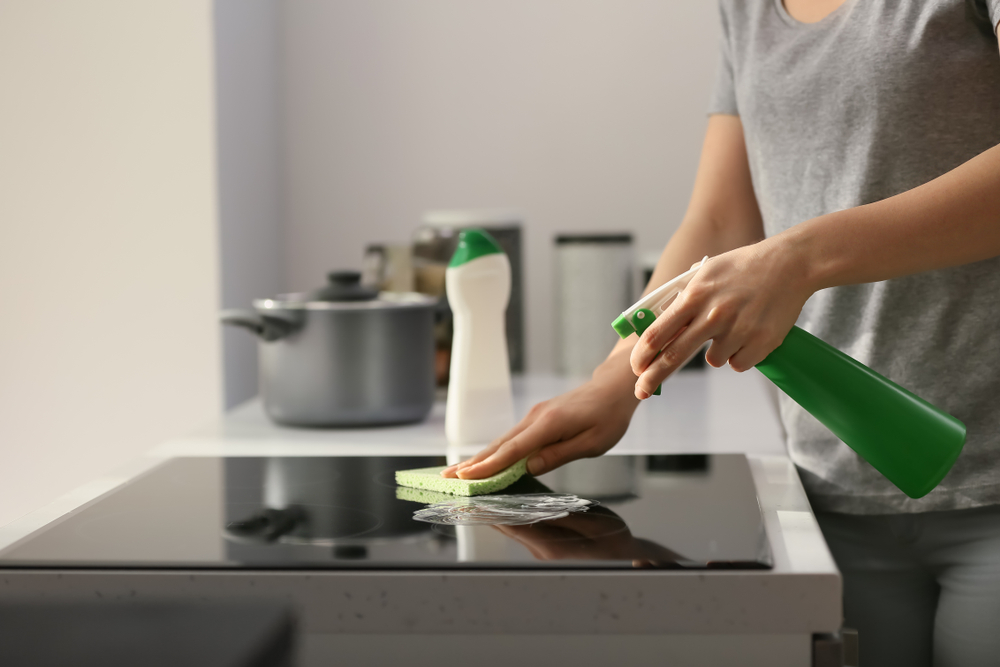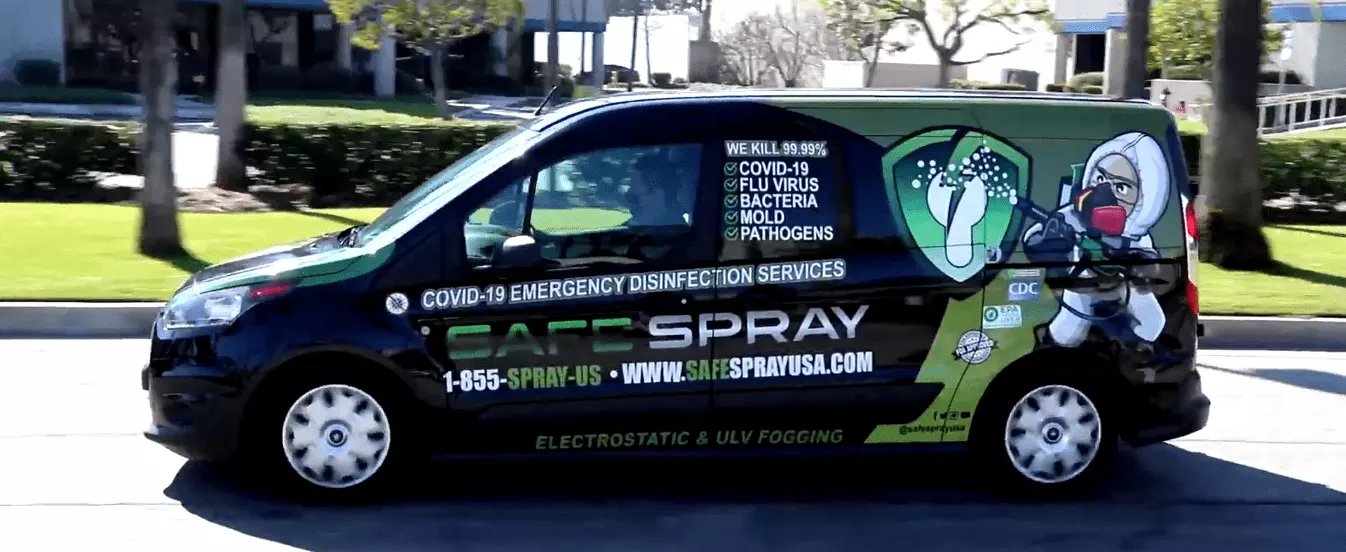Get a Free Estimate
Your information will not be shared. Safe Spray will send you a custom estimate.

No matter how inviting you make the rest of your house, when you host a gathering, it is the kitchen where everyone seems to gravitate to gather. It is the room where meals are made, and conversations linger in the air along with the enticing aroma from the last meal. The problem is that traces of salmonella or other microorganisms may be lurking there as well. That’s why it’s very important to not only clean but also disinfect the kitchen often.
It’s essential to understand the difference between daily cleaning for maintenance’s sake and a deep clean of the entire kitchen to sanitize. Sure, you gather the dishes and make sure they are clean after each meal, and you sweep crumbs off of the floor. But, how do you properly disinfect your kitchen?
The difference between cleaning and disinfecting or sanitizing –
Simply put, general cleaning is done to keep surfaces free of dirt and debris. Disinfecting or sanitizing is done to keep germs at bay.
Except under unusual circumstances, such as a pandemic, disinfecting should be done about once or twice a week. This will be determined by how many hands are touching the surfaces in your kitchen, food preparation, and whether anyone in your household is sick. It is a good idea to clean up and properly disinfect the surfaces where raw meat has touched immediately, and if someone is sick, it’s important to sanitize their dishes.
Two-Step Method
The United States Department of Agriculture USDA recommends a two-step method for disinfecting:
It takes a 2-step process:
- Clean
- Disinfect and Sanitize
It’s important to clean surfaces, but simply wiping down counters isn’t killing harmful microorganisms. Cleaning comes first because you cannot correctly disinfect or sanitize a surface until it has been cleaned and is free of debris, food crumbs, or dust that could harbor bacteria.
Clean with detergent or soap and water
Clean with warm, soapy water to remove visible dirt, food particles, and grime. Always clean the significant contact points, such as doorknobs, appliance handles, drawer pulls, light switches, faucet handles, tabletops, counters, and chair surfaces. It helps to keep from transmitting bacteria or viruses. Also, always clean knives immediately after they have been used before using them to cut something else.
Let gravity be your friend. Start with a top-down approach. As you dust, all of those dust bunnies are going to fall somewhere. So, it only makes sense to stick with the laws of gravity and start cleaning from the top down.
- First, clear everything off of the counter
- Empty Dishwasher and Wash dishes – Use the dishwasher to clean any kitchen utensils, cutting boards, or other dishes.
- Dust Top Of fridge
- Clean small appliances and everything on the counter
- Clean inside of oven
- Wipe down counters
- Deep clean sink till it sparkles – One clutter tackling blogger describes this as making your sink smile at you.
- Clear out fridge
- Wipe down outside of large appliances
- Empty and wipe down outside of garbage can
- Sweep vacuum mop floor
Properly Disinfect and Sanitize
Cleaning removes debris and bacteria from surfaces. However, pathogenic bacteria lurk on surfaces for quite a while. Salmonella, for instance, lives as long as 32 hours. To make sure bacteria and other microorganisms are removed, you need to sanitize. After you clean, it’s time to disinfect and sanitize.
Wear Gloves
Always wear gloves and dispose of them after cleaning and disinfecting. Depending on the disinfectant you use, you may also need to make sure the area is well ventilated. Always refer to the label on the disinfectant.
Use Disposable Towels
To clean up areas where meat juice has leaked, use a paper towel or disinfecting wipes. Please do not use a sponge or cloth unless you are diligent about immediately cleaning it before reusing it.
Choose Your Disinfectant
Choose the sanitizer you prefer and buy it, or make your own. To properly disinfect, use either a bleach solution or isopropyl alcohol. If you are using bleach, be sure to dilute it. According to the CDC, you should mix 5 tablespoons of bleach with a gallon of water or 4 teaspoons of bleach for every quart of water. When using isopropyl alcohol, look at the label and use only those that contain at least 70% alcohol. Alcohol comes pre-diluted with water. Or use sanitizing wipes.
How to Sanitize
Poor or spray the sanitizing solution onto the surfaces and then wipe them clean with a paper towel. If you use bleach in the solution, Clorox recommends that you will need to make sure the surface stays wet for between 30 seconds to a full 5 minutes. But, be sure to wipe the surfaces completely dry before using them.

Get Your Free Quote Today!
We also offer a no obligation, free onsite service estimate.

 Get a free Consultation
Get a free Consultation